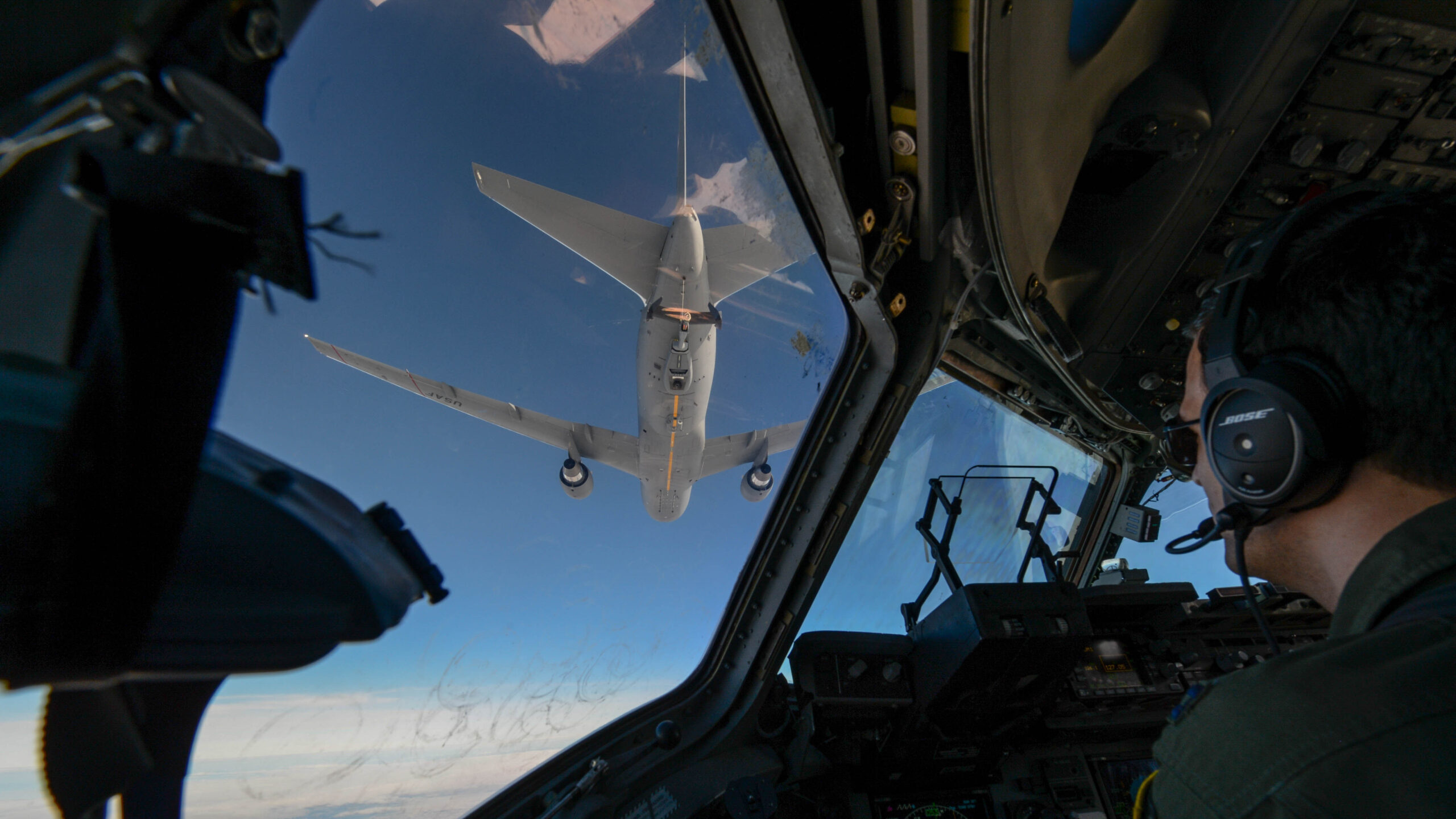
A KC-46 Pegasus during refueling training over central Wash., Jan. 30, 2019. (U.S. Air Force photo by A1C Sara Hoerichs)
WASHINGTON — The KC-46’s new Remote Vision System 2.0 won’t be available until October 2025, a delay of more than a year that also sets back the date for initial operational capability.
During a program management review held last week, the Air Force determined “an additional 19 months will be required to achieve an Operational Military Flight Release (MFR) for the RVS 2.0 upgrade, resulting in fleet release being delayed from March 2024 to October 2025,” Air Forces spokesman Maj. Josh Benedetti said in a statement.
The Air Force said the change of schedule was driven by “sub-contractor development timelines, but also includes updates related to FAA airworthiness process alignment, and USAF airworthiness policy/process integration.”
The Boeing-made KC-46’s original Remote Vision System (RVS) — the system of cameras and sensors used by the boom operator during the refueling process instead of looking out a window, as in legacy tankers — has historically been a pain point for the program, with the Air Force contending that the system does not function in all lighting and weather conditions as stipulated.
RELATED: Government watchdog to Air Force: Don’t ok new KC-46 vision system prematurely
After years of negotiations, Boeing in 2020 agreed to fully redesign and pay for a new vision system, known as RVS 2.0. That system would begin to replace the legacy RVS in 2024.
“Our defense industrial base continues to face supply chain issues and we’re seeing effects in the acquisition schedules of technically complex systems, such as the KC-46 Remote Visual System 2.0,” Andrew Hunter, the Air Force’s top acquisition official, said in a statement. “We’ll continue to examine possible opportunities to accelerate the schedule to bring this increased operational capability to the tanker fleet. KC-46s will continue to support worldwide deployments to meet the daily joint force air refueling demands.”
There is no added cost to the KC-46 program as a result of the delay, as the service’s design requirements have not changed since the preliminary design review was approved in April, Benedetti said.
Global supply chain shortages and longer lead times to buy materiel are the primary causes of the delay, a Boeing spokesperson said in a statement. However, the company also highlighted the impact of FAA and Air Force testing on the schedule.
“The re-baselined schedule for RVS 2.0 certification is reflective of estimated timelines for the complete and thorough regulatory review and certification from both regulators, which are engaged throughout the laboratory and flight test process. We support our regulators through the certification process, as much time as that requires,” the spokesperson stated.
Air Force officials have said that they will not declare initial operational capability for the KC-46 until RVS 2.0 had been fielded. However, last month Air Mobility Command cleared the KC-46 for combat operations, with the tanker able to refuel all US military aircraft except for the A-10 Warthog.
“I’m 100% confident in its ability,” said Air Mobility Command head Gen. Mike Minihan, who bristled when questioned whether the Air Force was letting Boeing off the hook for approving the KC-46 for operations before it officially meets the requirements for IOC.
“I am extremely straightforward with Boeing in my concerns about quality, timelines, and costs. But if I can put an incredibly capable tanker in the fight, then why wouldn’t I?” he told reporters last month. “It’s the most capable aircraft in my inventory right now. … There are 60 of the fleet. I would not, for one second, play politics with the defense industry when it comes to the mission of my command or the lives of the Americans I support.”
Navy jet trainer fleet operations remain paused after engine mishap
One week after the incident, a Navy spokesperson says the service is continuing to assess the fleet’s ability to safely resume flight.



























